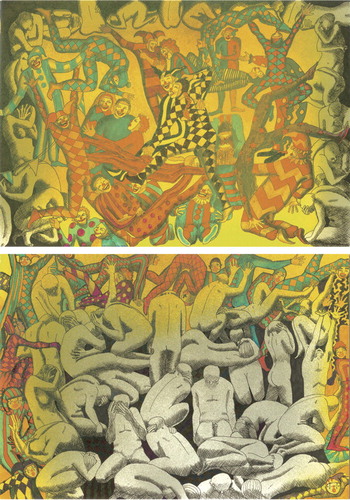Depression and Mania in Mixed States
These exquisite images by gifted Australian artist Deirdre Oliver illustrate beautifully the spectral admixture of depression and mania seen in mixed states, graphically distilling the essence of the subjective experience while simultaneously depicting a clinically critical issue. Together, the two images depict mirror perspectives, namely, the euphoria of mania encircled by depression (top) and the melancholy of depression surrounded by a penumbra of mania (bottom). These pictures capture the clinical breadth of this phenomenon and contrast with the DSM view that necessitates concurrence of full manic and depressive presentations.

There has been an emerging consensus that mixed states are common (1) and frequently underrecognized (2) . These occur on a spectrum of severity between DSM-IV-TR criteria and pure episodes, but better diagnosis is necessary because they are likely to require differential management and may have poorer prognosis in comparison to more pristine phases.
1. Dilsaver SC, Benazzi F, Akiskal HS: Mixed states: the most common outpatient presentation of bipolar depressed adolescents? Psychopathology 2005; 38:268–272Google Scholar
2. Berk M, Dodd S, Malhi GS: “Bipolar missed states”: the diagnosis and clinical salience of bipolar mixed states. Aust NZ J Psychiatry 2005; 39:215–221Google Scholar



